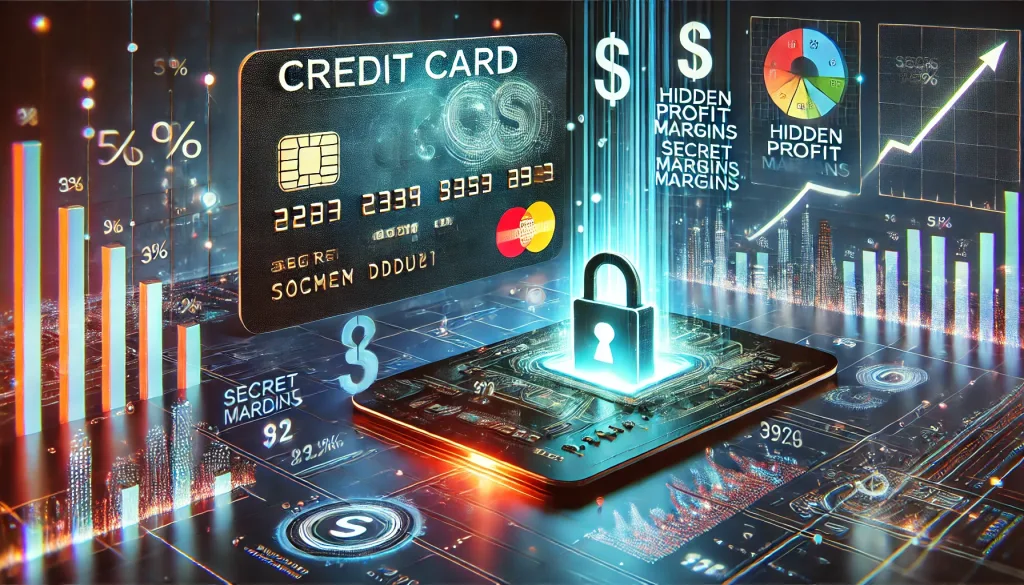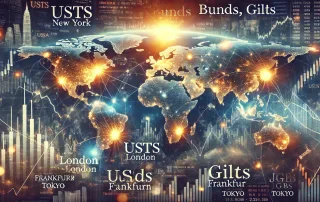Interest Rates Are Falling, But Credit Card Rates? They’re Skyrocketing!

The average credit card rate in the U.S. is sitting pretty (or, well, ugly) at a whopping 20.51%, according to Bankrate. It’s just a smidge below the all-time record of 20.79% set earlier this year. What gives? Why are credit card rates holding onto these high peaks while other interest rates start to ease off the gas pedal?
Let’s get real. Part of it, of course, is because of the Federal Reserve’s aggressive rate hikes in 2022 and 2023—they pumped up rates to cool down inflation, and credit card rates followed suit. But that’s not the whole enchilada, folks. Credit card interest rates are stubbornly sticking to new highs, even as the Fed taps the brake. And here’s where the story gets juicy: it’s all about the record-high margins those credit card companies are raking in.
The Hidden Profit Secret of Credit Card Companies
“Margins”—sounds nice and innocuous, right? Well, in the world of credit cards, it means the profit margin they charge above the prime rate. This is basically the difference between what banks pay to borrow money (the prime rate) and what they charge you for borrowing it. Spoiler alert: it’s through the roof.
Right now, credit card margins average 14.9%. That’s a solid 15% on top of the prime rate, and that’s no small potatoes. In 2020, that average margin was 13.2%, and back in the seemingly innocent days of 2015, it was just 10.7%, according to WalletHub.
Why the giant leap, you ask? Turns out, those banks really like their profits. During the Great Recession, as interest rates hovered near zero, card companies took advantage, steadily increasing margins to make up for low borrowing costs. And when rates went up? Those margins just… stayed up.
Have you ever wondered why banks seem to get away with this? It’s almost like they’ve found a secret playbook that keeps their profits soaring, no matter the economic climate. Could this be a sign that the system itself is rigged in their favor?
Why Aren’t Card Rates Dropping Now?
Here’s the plot twist: even when the Fed cuts rates, credit card issuers don’t necessarily play nice. Take September as an example—the Fed slashed rates by half a percentage point, but credit card rates barely budged. In fact, some lenders even hiked their rates on new cards. The audacity!
So, what’s the deal? Ted Rossman, an industry analyst at Bankrate, puts it simply: “Card issuers are adding on some extra profit margin to compensate for the fact that some cardholders won’t pay them back.” In industry lingo, that’s called risk-based pricing. In regular human language, it means you’re paying for someone else’s bad decisions.
Does this feel fair to you? Should responsible cardholders be footing the bill for those who don’t pay on time? It’s questions like these that make us realize just how much power these financial institutions hold over our wallets.
Maxed-Out Cards and Maxed-Out Rates
With credit card rates at record highs, it’s no surprise that one in five cardholders has maxed out at least one card since the Fed started hiking rates. And maxed-out cards are, unsurprisingly, not great for your credit score. When you’re constantly dancing on the edge of your credit limit, it’s like waving a giant red flag in front of the credit bureaus. “Look at me, I’m financially stressed!”
Did you know that even a single maxed-out card can tank your credit score by as much as 45 points? This makes it harder to get loans, mortgages, and even other credit cards at reasonable rates. How many people are aware of just how devastating this can be?
The average household now carries $10,805 in credit card debt. And that debt isn’t getting cheaper. More than half of credit card holders are “financially unhealthy,” says a J.D. Power report, meaning they’re struggling to make payments and lack a long-term financial plan. So much for those card perks that were supposed to make life better—only a quarter of cardholders think those perks are actually improving their lives.
According to Odysseas Papadimitriou, CEO of WalletHub, “Credit card companies are banking on the fact that most consumers won’t notice or understand the true cost of carrying a balance.” This is why financial literacy is more important than ever—understanding how these systems work can save you thousands in the long run.
A Call to Action: Find Your Hidden Advantage
So what can you do? Well, the first step is knowledge—and you’re already on the right track just by reading this. But let’s get a bit more strategic. If you’re currently carrying a balance, consider a balance transfer card to lock in a lower rate and start chipping away at that debt before these margins gobble up even more of your money. And keep an eye on those margins—understanding how and why credit card companies set their rates can give you a tactical advantage.
Have you looked into the fine print on your card agreement lately? Most of us don’t, but there can be hidden fees and rate adjustments that catch you by surprise. What if taking a closer look could save you hundreds of dollars a year?
And hey, if you’re tired of feeling like credit card companies are squeezing you dry, check out our Forex Education for some real strategies to make your money work for you. It’s time to level up and fight back against these sky-high margins with a little financial ninja magic of your own.
—————–
SOURCE: USA TODAY
Image Credits: Cover image at the top is AI-generated

Anne Durrell
About the Author
StarseedFX delivers timely Forex news and market insights, thoughtfully edited and curated by Anne Durrell. As a seasoned Forex expert with over 12 years of industry experience, Anne turns complex market shifts into clear, engaging, and easy-to-understand updates.
From decoding the latest trends to writing her own in-depth analyses, Anne ensures every piece is both informative and enjoyable. If you found this article helpful, don’t forget to share it with fellow traders and friends, and leave a comment below—your insights make the conversation even richer! Follow StarseedFX for fresh updates and stay ahead in the dynamic world of Forex trading.






